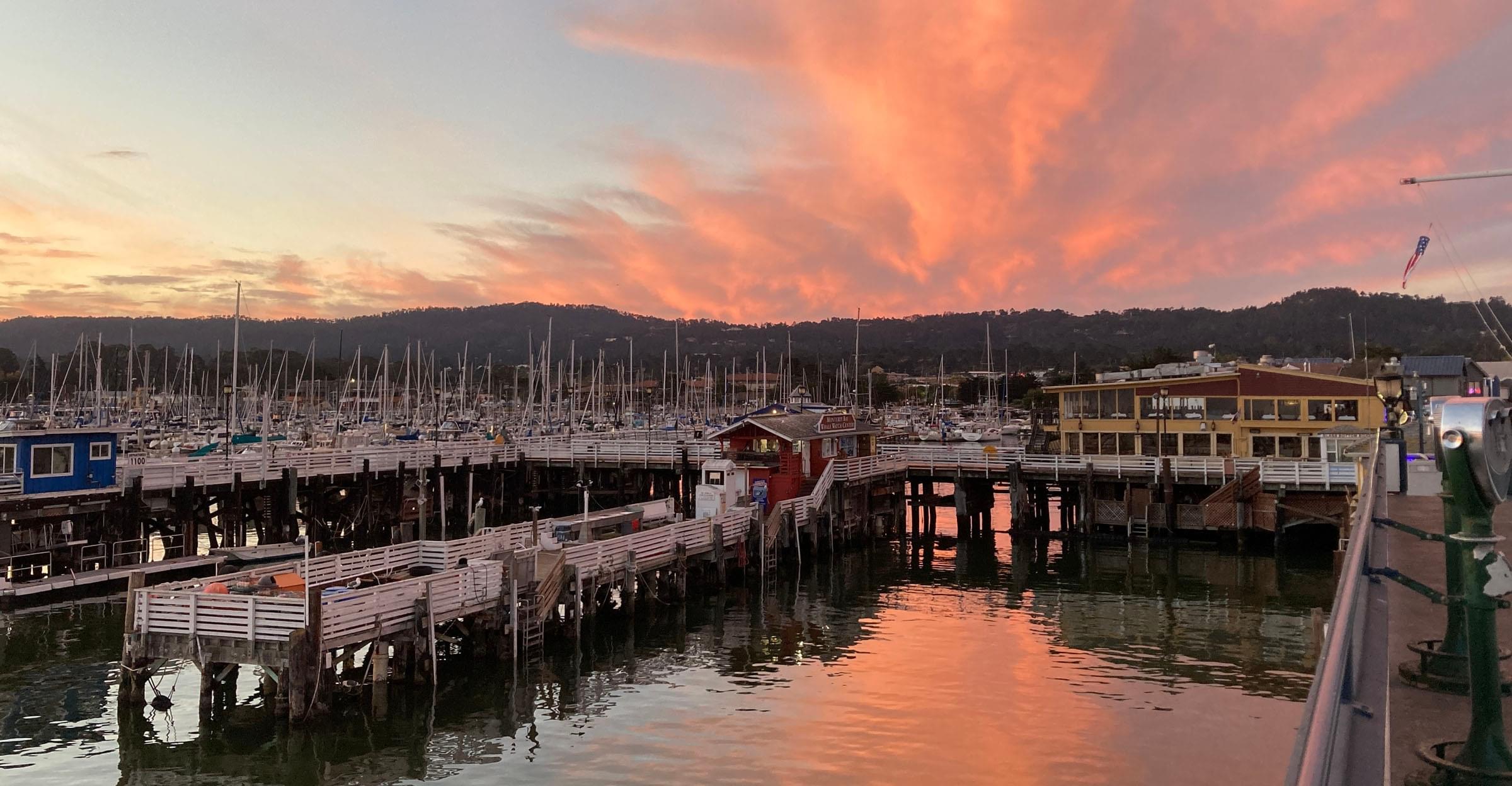Monterey Harbor

Monterey Harbor
201 Washington St., Monterey, California 93940
Monterey Wharf's parking & direction detailsMonterey Wharf's whale-watching trip page
Monterey Seabirds trips & schedule
Tips for Birding
Most birders encounter this Hotspot by going on a pelagic trip on Monterey Bay. There are four whale-watching companies on Fishermans Wharf (see link above), and whale-watching trips are available throughout the day, every day, weather permitting. Monterey Bay Whale Watch is the one most recommended for birders, as there are naturalists aboard every trip and if you inform the captain and staff you are birding, they will assist you to spot birds or stop of them when possible, but the primary focus of whale-watching trips is whales, so you will primarily be going where the whales are being seen. Monterey Bay Whale Watch offers focused pelagic birding trips, mostly from August-November; see the link above to their Monterey Seabirds trips.
eBirding a pelagic trips: You may not put your entire pelagic trip in this Hotspot. eBird requires that harbor birds be mapped to the harbor (this hotspot) but that pelagic birds that are more than 2 miles offshore be mapped offshore. There are 10 different pelagic trip hotspots for Monterey Bay and Monterey County. Most typical 8-hour boat trips can be mapped to the Hotspot called "Monterey Bay pelagic (2+ mi offshore, MTY Co.)," unless your trip goes into Santa Cruz County, at which time you would switch to a hotspot in that county. Birds between the Harbor and Pt. Pinos, and less than 2 miles offshore, may be mapped to the Hotspot called "Monterey Bay pelagic--Harbor to Pt. Pinos)." Thus, assuming you want to eBird your entire trip, you must have at least 2-3 separate checklists, e.g., (a) the harbor, (b) inshore birds within 2 miles of shore, and (c) pelagic birds more than 2 miles offshore. If you plan to use eBird's "pelagic protocol," please note that it is also intended to be used only when you are more than 2 miles offshore. [Monterey County has a separate filter for pelagic trips offshore, but if you put inshore birds on the offshore checklist, they will likely be caught in the filter. Inshore birds mapped offshore will be removed from the eBird database, as will offshore birds mapped inshore or in the harbor.]
You can view birds in the harbor from Fishermans Wharf — especially from a deck at end of the wharf — but better views of much of the harbor is found on the adjacent commercial wharf to the east (often called "Wharf #2"). You can drive to the end of that wharf where there is a fish market, but parking is very tight at the end. Instead, there is metered parking all along the base of Wharf #2. A scope is useful from the end of Wharf #2, as it will let you view birds sitting on the Coast Guard jetty and in the harbor both westward and eastward.
The Monterey Bay hiking/biking trail parallel the land side of the inner harbor, west of Fishermans Wharf. This is a wide paved trail, wheelchair accessible, and you have close views of Harbor Seals and birds of the inner harbor: gulls, grebes, loons, Red-breasted Merganser, and sometimes a rarity (Harlequin Ducks have summered here in the past).
Birds of Interest
Loons (three species), grebes, and Surf Scoters are present most of the year in Monterey harbor, although numbers will be highest in winter and lowest (or absent) in summer. Brandt's Cormorants nest on the Coast Guard Jetty. Pigeon Guillemot breeds under both wharves and is usually easy to see from about mid-March to mid- September. Pelagic Cormorants also nest under the wharves. Common Murre is often seen in the harbor, but in fall and winter look for scarcer species, such as Rhinoceros Auklet, Cassin's Auklet, Ancient Murrelet, or Marbled Murrelet. Strong northwestern storms help push alcids into the harbor. At time scarce sea-ducks, including Harlequin Duck and Long-tailed Duck, have wintered (and sometimes summered) in the harbor. Over the yeas major rarities include Brown Booby sitting on the Coast Guard jetty (scoped from Wharf #2), Thick-billed Murre, and Yellow-billed and Arctic Loon — you would learn about such rarities primarily through eBird alerts for Monterey County.
About this Location
Monterey Harbor is a popular harbor and marina, created by the Coast Guard Jetty that encloses part of the ocean side of the harbor. There are two main wharves — divided by a marina where boats are moored — and both of them have businesses. The western wharf is Fishermans Wharf, a very busy tourist location with multiple shops and restaurants, and the wharf from which Monterey Bay pelagic trips begin. The eastern wharf, on which you can drive and park in metered parking, is called either the Commercial Wharf or Wharf #2. There are restaurants on and adjacent to this wharf. In the series of photos at the top of this page, the first photos depict Fishermans Wharf, some photos show both wharves, and the final photos depict Wharf #2.
Although there are no entrance fees to the two wharves, all parking requires either a permit or is paid parking. The main parking areas have become pre-paid parking lots, using credit card or an app; see the Wharf's parking link above. There are public restrooms near the end of Fishermans Wharf, and, of course, in restaurants if you are a patron.
Features
Restrooms on site
Wheelchair accessible trail
Entrance fee
Roadside viewing
Content from Monterey Wharf's parking & direction details, Monterey Wharf's whale-watching trip page, and Monterey Seabirds trips & schedule
Last updated March 9, 2023